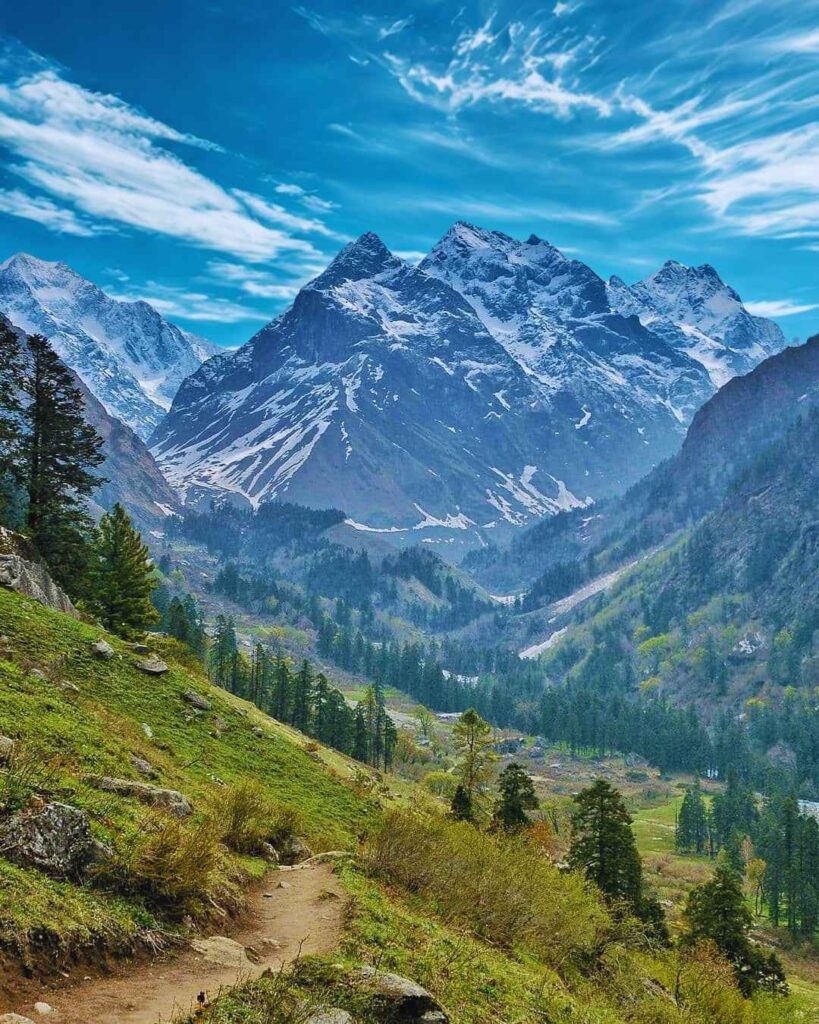Har Ki Dun, often referred to as the “Valley of Gods,” is one of the most picturesque treks in the Indian Himalayas. Nestled in the Govind Pashu Vihar National Park in Uttarkashi, this trek offers everything a mountain lover could ask for lush green valleys, dense forests, glacial basins, and a rich mosaic of cultures in the remote villages of Osla and Sankri.
Rising to an altitude of around 12,000 feet (3,650 meters), Har Ki Dun is considered a moderate trek. However, the risk of altitude sickness is still real, especially for first-time trekkers or those who underestimate the thin air at higher elevations. In this blog, we’ll unpack everything you need to know to recognize, prevent, and manage altitude sickness so that your Har Ki Dun experience is one of awe, not ailment.
Understanding Altitude Sickness
What Is It?
Altitude sickness, or Acute Mountain Sickness (AMS), occurs when your body doesn’t get enough time to adjust to the decreasing oxygen levels and lower atmospheric pressure found at high altitudes.
Common Symptoms
-
Headache (often the first sign)
-
Nausea or vomiting
-
Fatigue
-
Dizziness or lightheadedness
-
Shortness of breath
-
Disturbed sleep
-
Loss of appetite
If ignored, AMS can develop into more serious conditions like High Altitude Pulmonary Edema (HAPE) or High Altitude Cerebral Edema (HACE) both of which can be fatal without immediate descent and treatment.
Altitude Profile of Har Ki Dun Trek
Understanding the altitude gain helps you plan better. Here’s a rough breakdown:
-
Sankri (6,400 ft / 1,950 m) – The base village.
-
Seema / Osla (8,200 ft / 2,500 m) – First major stop.
-
Har Ki Dun Valley (11,500 - 12,000 ft / 3,500 - 3,650 m) – Final camping point before returning.
Although the altitude is not extreme, the gain is gradual, and the risks still exist. Being prepared is essential.
Pre-Trek Preparation
1. Physical Fitness
A fit body adjusts better to altitude changes. Start training at least a month in advance with a mix of:
-
Cardio: Running, cycling, or brisk walking to improve oxygen efficiency.
-
Strength training: Focus on legs, back, and core.
-
Hiking practice: Carry a backpack and walk uphill for extended periods.
2. Acclimatization Hikes
If possible, spend a day or two at a mid-altitude location before starting your trek. This helps your body adjust gradually to reduced oxygen levels.
3. Hydration and Diet
Begin hydrating days before the trek. A well-hydrated body adjusts better. Also, start cutting down on caffeine and alcohol, which can dehydrate and stress your system.
During the Trek: Tips to Avoid Altitude Sickness
1. Ascend Gradually
Even though Har Ki Dun has a manageable gradient, avoid rushing. Stick to the planned itinerary and allow your body time to adjust to each new elevation.
Rule of thumb: Don’t ascend more than 1,000 feet (300 meters) per day above 10,000 feet, especially if you’re not acclimatized.
2. Stay Hydrated
Drink at least 3-4 liters of water per day. Carry electrolytes or rehydration salts to replace minerals lost through sweat. Avoid carbonated and caffeinated beverages.
3. Eat Carbs
Your body burns more calories at higher altitudes. High-carb meals help in better energy production and oxygen utilization.
4. Layer Up Smartly
Cold increases the chances of dehydration and altitude-related symptoms. Layer your clothing to stay warm but avoid sweating excessively, which can lead to fluid loss.
5. Avoid Alcohol and Smoking
Both interfere with oxygen absorption and exacerbate the symptoms of altitude sickness. Leave the celebrations for your return!
6. Go Slow and Listen to Your Body
Pacing is critical. You might be excited to reach that viewpoint, but pushing too hard can backfire. If you experience headaches, dizziness, or nausea, inform your guide and rest.
AMS Prevention Essentials to Carry
-
Diamox (Acetazolamide): A common preventive medication. Begin taking it 24 hours before hitting high altitudes if recommended by a doctor.
-
ORS or electrolyte packets: For hydration.
-
Portable oxygen canisters: Just in case of emergencies.
-
Pulse oximeter: Optional, but useful to monitor oxygen saturation.
-
Basic first-aid kit: Always be prepared.
Recognizing When to Descend
No view or summit is worth compromising your health. You should descend immediately if:
-
Your headache worsens despite rest and medication
-
You feel confused, disoriented, or have trouble walking straight
-
You develop a persistent cough or difficulty breathing even at rest
In these cases, descending even a few hundred meters can make a big difference. Guides and trek leaders are trained to recognize and respond to such symptoms—trust their advice.
Recovery Tips Post-Trek
After returning from the trek:
-
Rest well and hydrate.
-
Eat nourishing meals to recover lost energy.
-
Avoid strenuous activity for a few days to let your body recuperate.
Why Har Ki Dun Is Still a Safe Bet
Despite the altitude, Har Ki Dun is considered one of the safer treks in the Himalayas. Here's why:
-
Gradual Altitude Gain: The slow and steady ascent gives your body time to adapt.
-
Good Acclimatization Points: Osla and Seema serve as excellent mid-altitude rest stops.
-
Scenic Distractions: From alpine meadows and wildflowers to ancient temples and friendly villagers, the trek provides constant joy that helps you forget the struggles.
-
Support System: Most trekking groups are led by experienced guides, porters, and support staff who are trained to deal with medical situations.
Final Thoughts
Altitude sickness isn’t something to fear it’s something to respect. With proper preparation, awareness, and a measured pace, you can enjoy every step of the Har Ki Dun trek without worry. Let the valley's beauty unfold at its pace, and in return, it will give you memories etched in mountain gold.

Comments on “How to Avoid Altitude Sickness on the Har Ki Dun Trek”